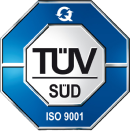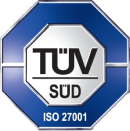Adapt your software for global markets with our AI-optimized localization services. We specialize in industry-specific content and UI adaptation, delivering high-quality, on-time solutions that elevate user experiences and drive international success.



In order to help your development and business teams, our localization engineers, software internationalization specialists and software programmers are available to you to assess your needs and develop the most cost-effective and practical solutions for your organization.
They can do as much or as little as you need: from educating your technical team on internationalization issues and guiding them through your internal internationalization process; to helping you plan and budget the process and design internationalization QA tests; to getting involved in the whole internationalization process hands-on.
The choice is yours.
After completing Internationalization—or, more likely—completing it up to the constraints imposed by real-world time and budget pressures, we are ready to start localization. Unlike Internationalization, which involves engineers and business managers, Localization involves a team of translators, localization engineers, multilingual desktop publishers, QA engineers, testers and a localization project manager.
Language Scientific can localize your software into any major European, Asian, Middle Eastern, African or Latin American language, including Arabic, Chinese, Dutch, French, German, Hebrew, Italian, Japanese, Korean, Portuguese, Russian, Spanish, etc.
Language Scientific’s Localization Process adheres to standards set by the Localization Industry Standards Association (LISA).
Localization of software is adapting software for use in various languages and locales. Localization involves more than just translation of User Interface (UI) and documentation. Software may need to be adapted for dealing with:
Before embarking on a localization program, it is important to verify that your software is adequately Internationalized. Internationalization is a process of making software ready for rapid and cost-effective localization into (practically) any language and for any locale. Internationalization does not involve any translation at all. It is simply making changes to the software to make both localization and maintenance of international versions easier.
Ideally, Internationalization is a fundamental part of the product design and development process. In reality, a vast majority of software needs further internationalization work after it is released in the American market. Internationalization involves, among other things:
In the real world, it is rare to see software that has been one hundred percent internationalized, but doing as much Internationalization upfront as possible before starting the localization and translation processes has benefits that tend to far outweigh the costs.
Internationalization can:
The more thorough the Internationalization process is, the better the outcome of the whole software development process in terms of:
In other words, Software Localization and Internationalization saves money and prevents many problems!
Language Scientific, Inc.® is a privately held corporation headquartered in Needham, Massachusetts.
Language Scientific, 100 Crescent Rd Needham, MA 02494
+1 617-621-0940
info@languagescientific.com



See how Puma Biotechnology improved compliance, engagement, and clarity using validated Spanish medical translations.